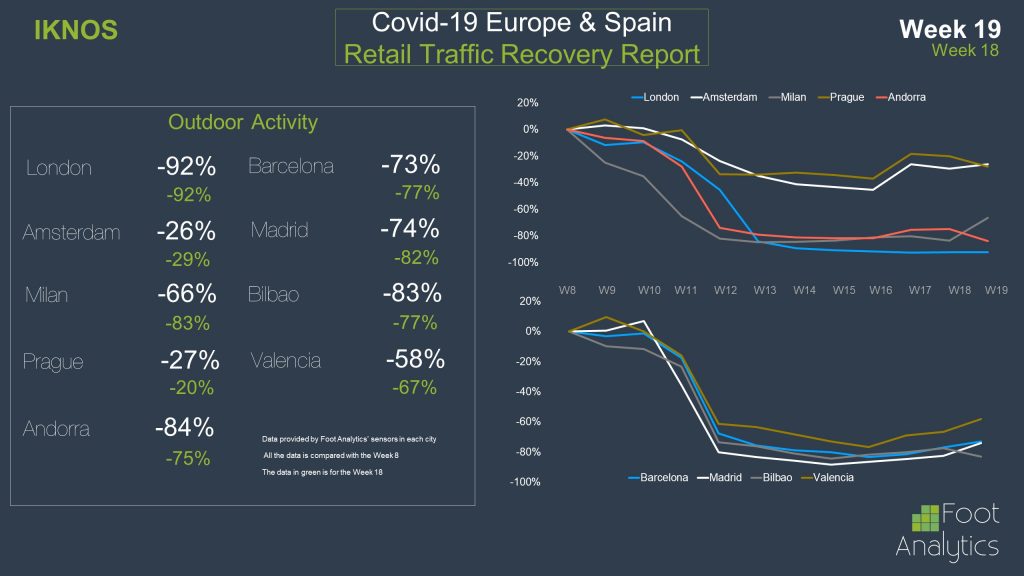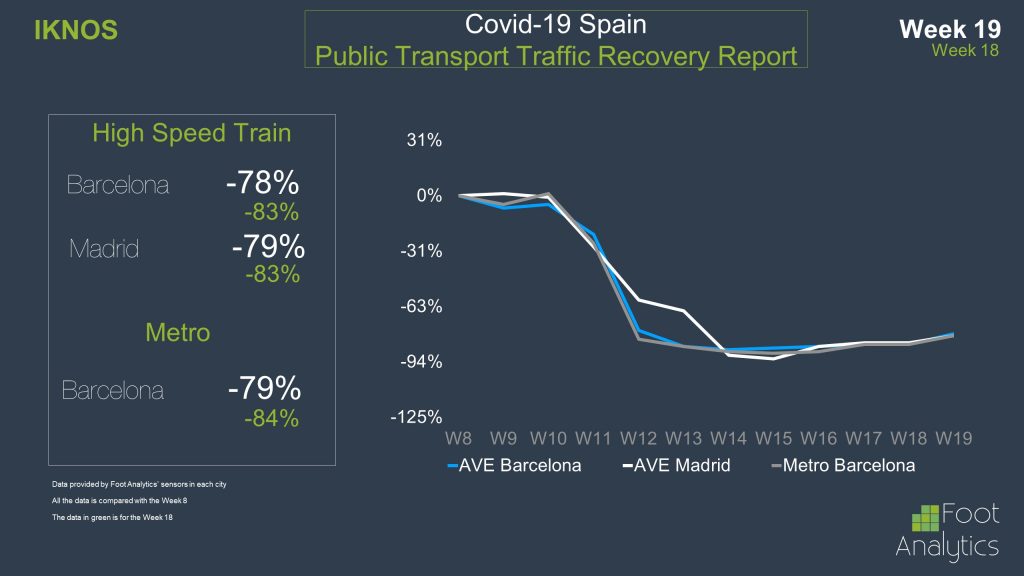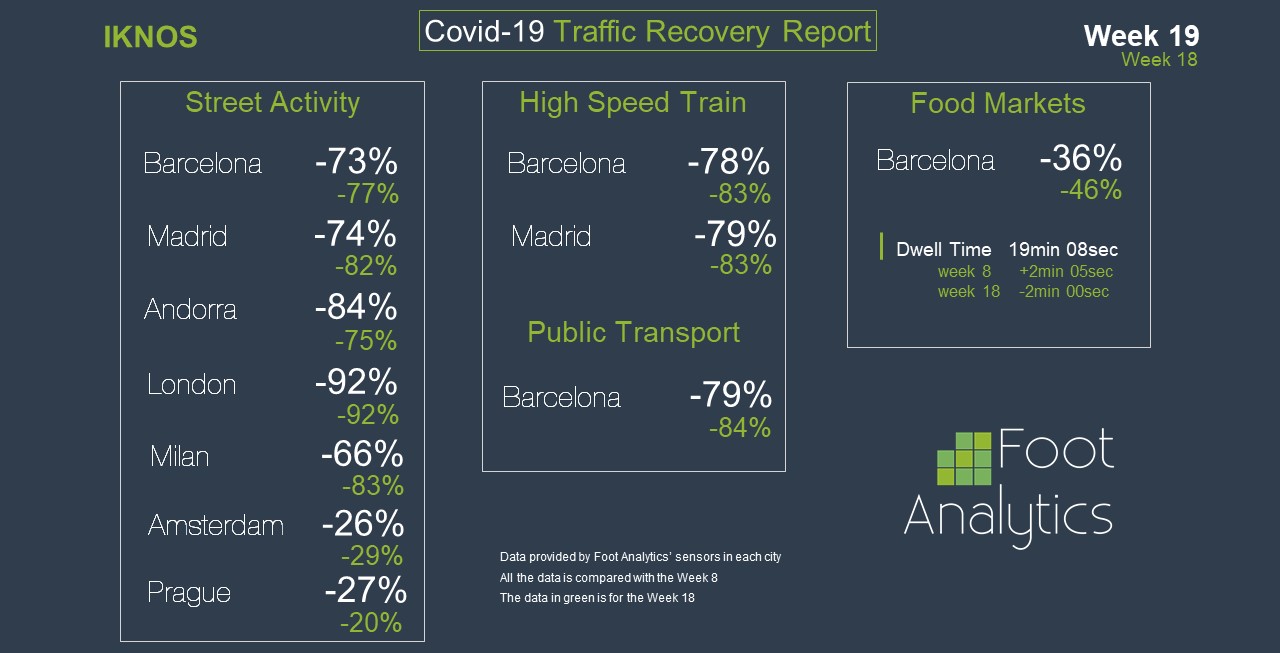Foot Analytics wants to take part in this battle against COVID-19, by helping professionals of different industries who have (more than ever) to rely on big data and analytics to act and accurately predict different economic scenarios promptly. With that purpose, we are going to share weekly data collected from Foot Analytics’ sensors across Europe and filtered through our platform IKNOS.
In our fourth Street Traffic Recovery Report, we are sharing and analyzing data on post lockdown recovery in terms of traffic of people in Week 19. As lockdown restrictions were slightly eased in most of the European countries here analyzed, a faster-growing trend concerning the traffic of people around cities has started developing. In fact, if Amsterdam and Prague remained the cities with a level of traffic of people closest to normality, respectively -26% and -27%, cities from Southern Europe have finally catched up with a significant growing amount of traffic; Milan, leading the growth for Southern Europe, registered a -66% of traffic compared to the pre-Covid situation, growing of 17pp with respect of Week 18 (-83%). Spain followed not too far away, with Barcelona and Madrid registering -73% and -74%, respectively 4pp and 8pp higher than in Week 18. Stationary was instead the situation in London, as restrictions on lockdown were still fully in place.
-

Image 1 – Europe & Spain Retail Traffic Recovery Report
The traffic situation in Spain was also accurately reflected in the traffic of people on public transports; the turnout at the High Speed Train connecting Barcelona and Madrid was 5pp higher than in week 18, reaching a -78% compared to pre-Covid data. The same 5pp increase was also registered on the Barcelona Metro service.

Very interesting was the situation concerning the traffic of people in the Food Markets of Barcelona; if Week 18 had registered a 6pp increase compared to the previous week, Week 19 registered a further 10pp increase with regards to Week 18, with total traffic assessing to an incredible -36% compared to the pre-Covid situation. Particularly, Dwell Time in the Food Markets can be very significative to understand people purchase behaviours regarding food; in fact, although the average time spent by people in the Food Markets remained approximately 3 minutes higher than the pre-Covid situation, the same metric has also constantly decreased the more we were approaching a situation of semi-normality. People going back to normal purchase habits, without stocking up, and consequent shorter lines and the checkouts could be reasonable explanations to this phenomenon.

Considering the fact that further ease of restrictions is not expected for next week in the cities considered, we forecast data coming from Week 20 to be quite in line with the one from previous week.
To see if any surprises will change the current scenario, stay connected!


